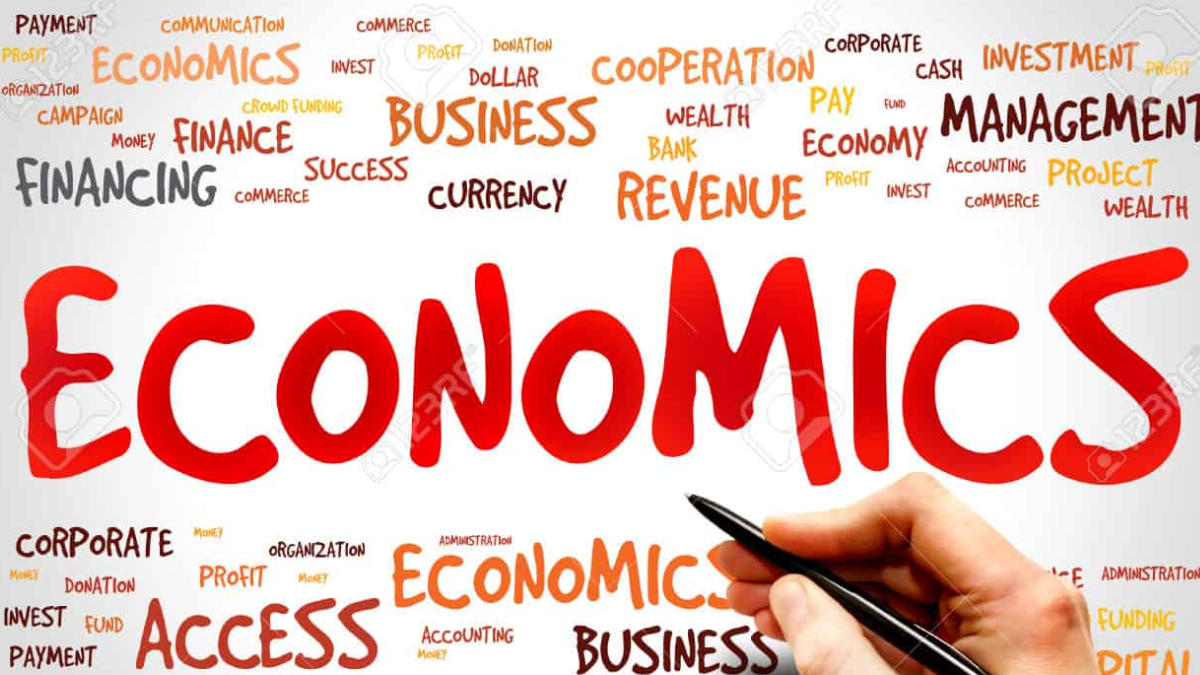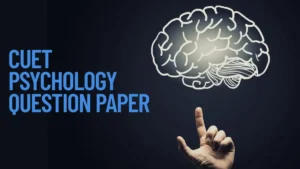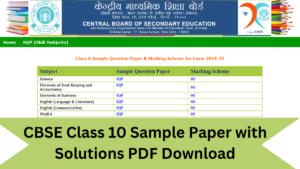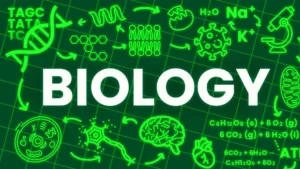Table of Contents
The Sample Paper of Economics Class 12 2024-25 along with the solutions has been released by the Central Board of Secondary Education in online mode. Practicing Class 12 Economics Sample Paper 2024 25 CBSE Board assists students in achieving high scores on the CBSE 12th Economics Board Examination. Students who are going to appear in the upcoming board examination can download the Class 12 Economics Sample Paper 2025 PDF along with the marking scheme from the board’s academic website or the direct link shared on this page below.
CBSE Class 12 Economics Sample Paper 2024-25
The Board has given CBSE Economics Class 12 Sample Paper 2024-25 so that students may better grasp the Class 12 CBSE paper pattern and marking scheme. Economics for CBSE students consists of two parts: an 80-mark theory test and a 20-mark project work. The theory paper is broken into two parts: macroeconomics and Indian economic development. Students can review the entire economics sample paper content to understand the pattern that the board will follow in the upcoming board examination, as well as the kind of answers that the board expects in the paper’s scoring scheme.
CBSE Economics Sample Paper Class 12 2024-25 Exam Pattern
The Pattern of the Class 12 Economics Sample Paper 2024-25 is based on the latest question paper structure prescribed by the board. Check out the class 12 economics sample paper 2024 25 Pattern discussed below.
- This question paper contains two sections:
- Section A – Macro Economics
- Section B – Indian Economic Development
- This paper contains 20 Multiple Choice Type Questions of 1 mark each.
- This paper contains 4 Short Answer Type Questions of 3 marks each to be answered in 60
to 80 words. - This paper contains 6 Short Answer Type Questions of 4 marks each to be answered in 80
to 100 words. - This paper contains 4 Long Answer Type Questions of 6 marks each to be answered in 100
to 150 words.
Sample Paper of Economics Class 12 with Solution PDF 2024-25
The CBSE Class 12th Economics Sample Paper 2024-25 along with the marking scheme and answer key are now accessible on the official board’s academic website at https://cbseacademic.nic.in. To make things easier we have shared the sample paper of economics class 12 with solution pdf 2024-25 Link in the table below,
| Sample Paper of Economics Class 12 with Solution PDF 2024-25 Link | |
| Sample Paper of Economics Class 12 with Solution PDF 2024 | Click here |
| Marking Scheme | Click here |
Previous Years Economics Sample Paper For Class 12th with Solution
|
Previous Year’s Class 12th Economics Sample Paper PDF with Solution
|
|||
| Year | Subject | Sample Question Paper | Marking Scheme |
| 2023-24 | Economics | Click Here | Click Here |
| 2022-23 | Economics | Click Here | Click Here |
| 2021-22 (Term A) | Economics | Click Here | Click Here |
| 2021-22 (Term B) | Economics | Click Here | Click Here |
| 2020-21 | Economics | Click Here | Click Here |
| 2019-20 | Economics | Click Here | Click Here |
| 2018-19 | Economics | Click Here | Click Here |
| 2017-18 | Economics | Click Here | Click Here |
| 2016-17 | Economics | Click Here | |
| 2015-16 | Economics | Click Here | Click Here |
Why Students have to Practice Sample Paper of Economics Class 12 with Solution PDF 2024-25
Practicing Class 12 Economics sample papers with solutions for the academic year 2024-25 is essential for several reasons:
Understanding the Exam Pattern
Sample papers are modeled after the latest exam pattern and syllabus, helping students become familiar with the question types, marking scheme, and section weightage.
Time Management Skills
Practicing within a time limit improves the ability to complete the paper on time, which is critical during exams.
Identifying Strengths and Weaknesses
Solutions provided in the PDFs help students analyze their answers and identify areas needing improvement.
Improved Conceptual Clarity
Reviewing the solutions helps reinforce economic concepts, theories, and formulas, ensuring better understanding.
Enhances Writing Skills
Practicing sample papers improves the presentation of answers, essential for scoring well in subjective papers like Economics.
Reduces Exam Anxiety
Familiarity with the types of questions and the practice of solving them builds confidence, reducing exam stress.
Practice of Frequently Asked Questions
Many sample papers include repeated or similar questions from previous years, giving students an edge.
Alignment with Board Preparation Strategy
Sample papers follow the CBSE or state board guidelines, making them an effective tool to align preparation with actual board expectations.
Regular practice of these papers ensures a well-rounded and comprehensive preparation strategy for scoring high marks in Class 12 Economics.



 CBSE Class 12 Psychology Question Paper ...
CBSE Class 12 Psychology Question Paper ...
 CBSE Sample Paper 2024-25 Class 10 with ...
CBSE Sample Paper 2024-25 Class 10 with ...
 CBSE Class 12 Biology Question Paper 202...
CBSE Class 12 Biology Question Paper 202...










